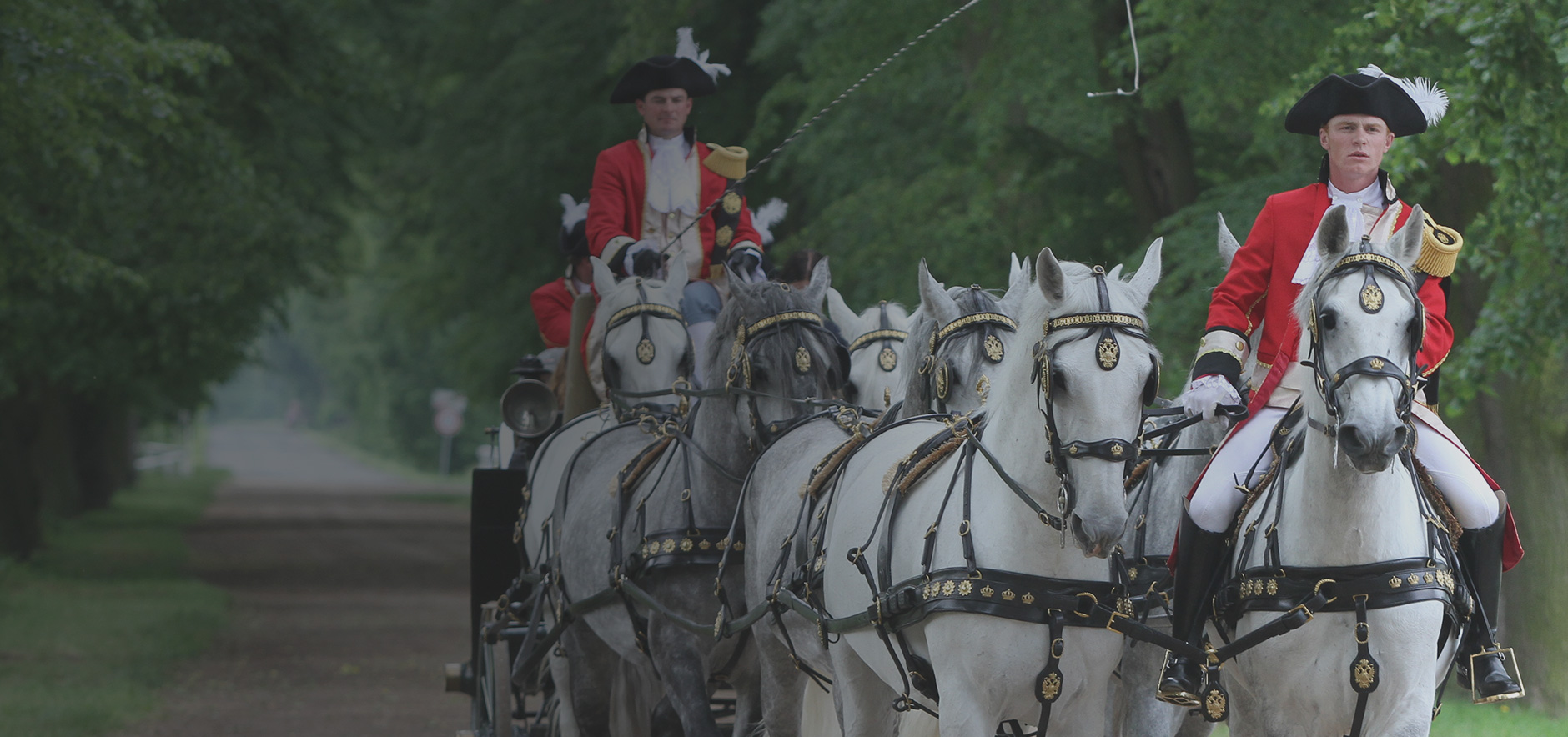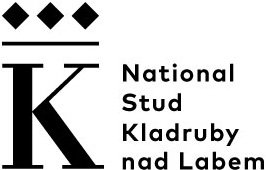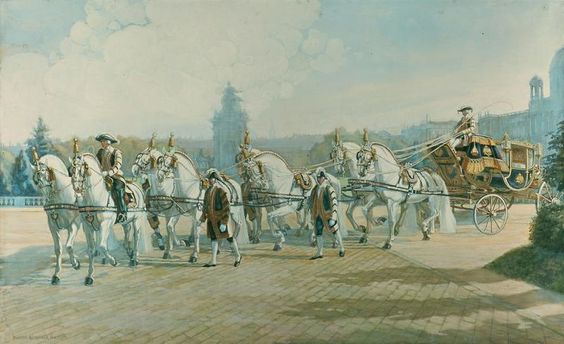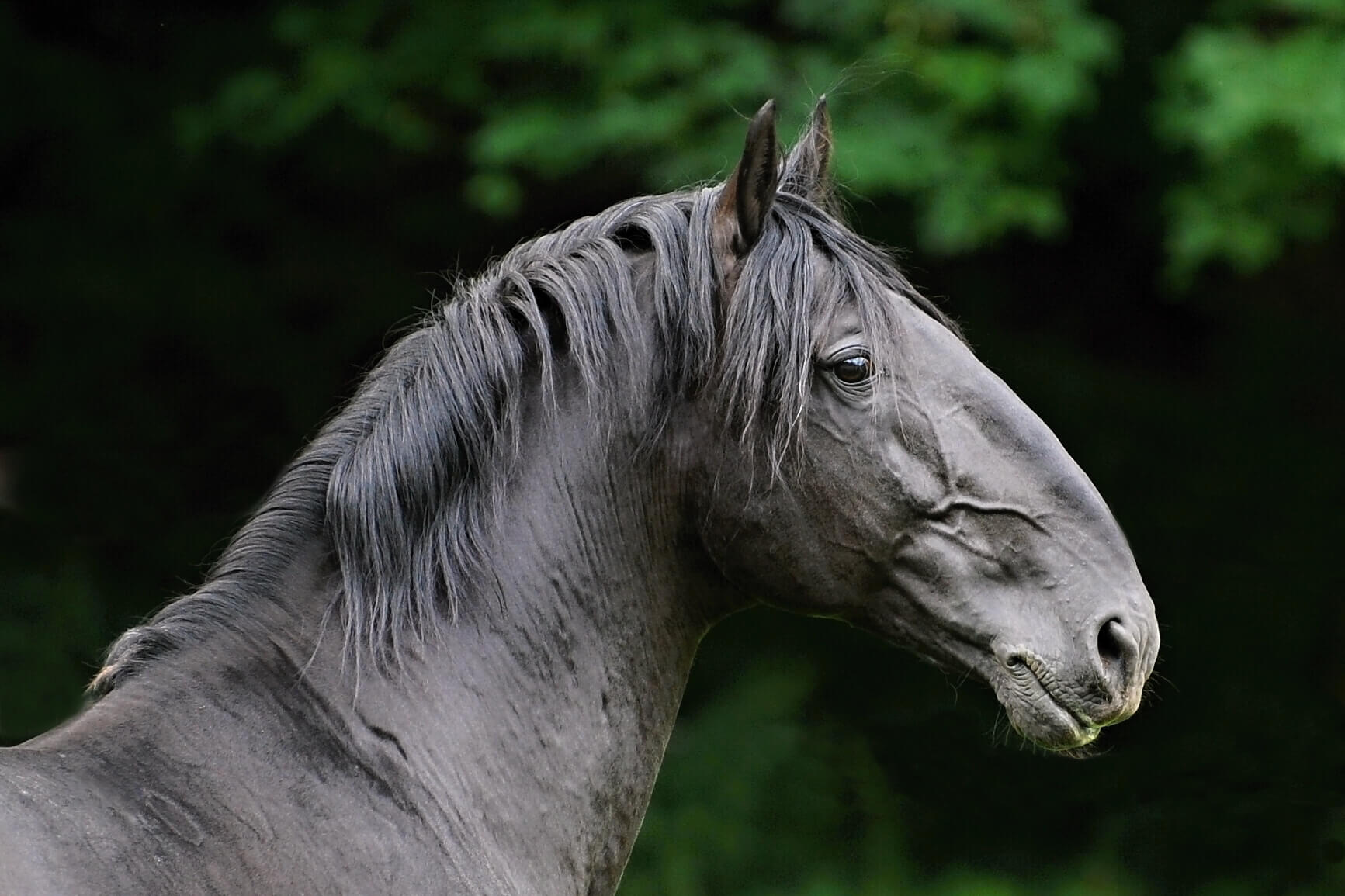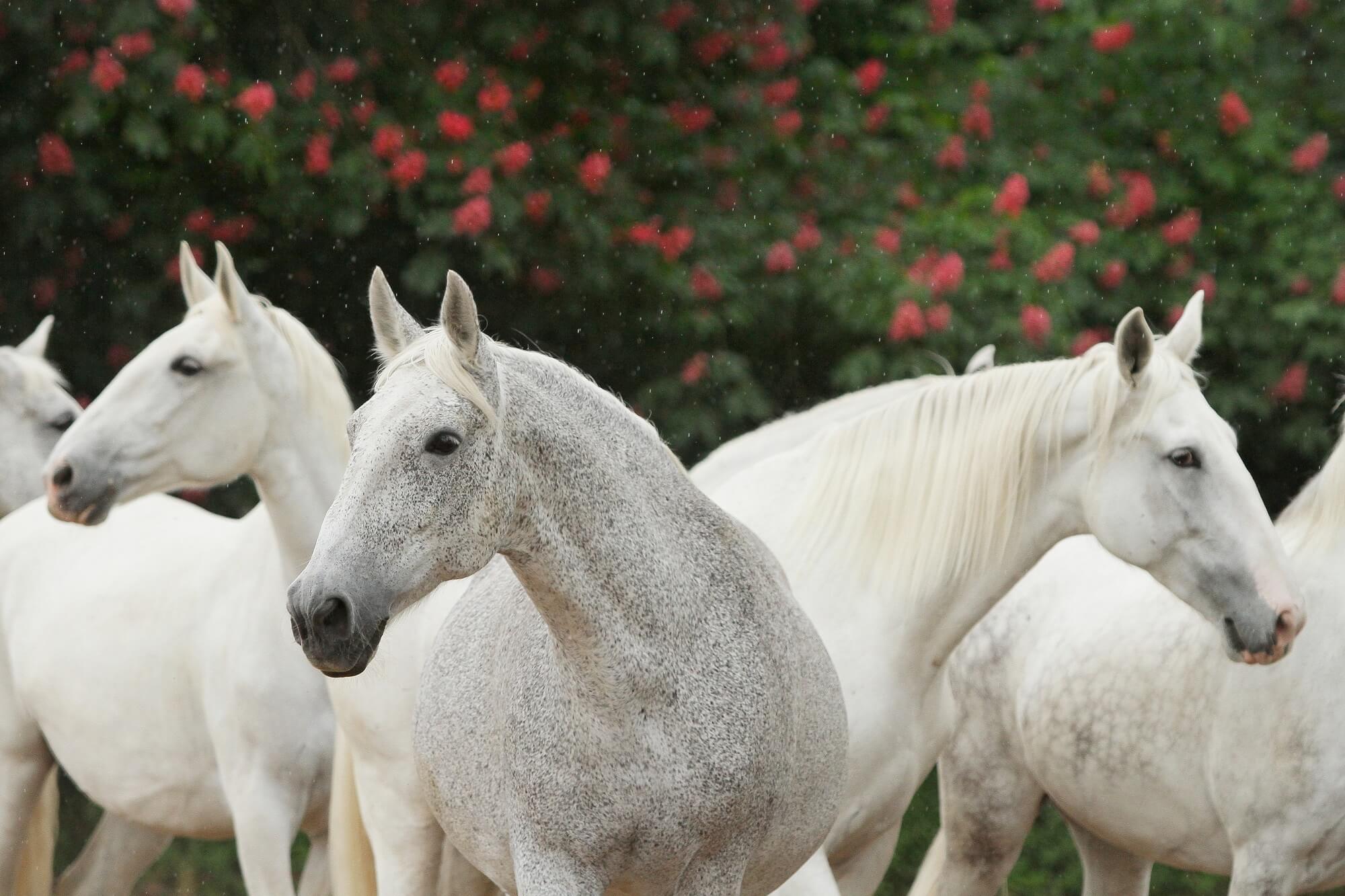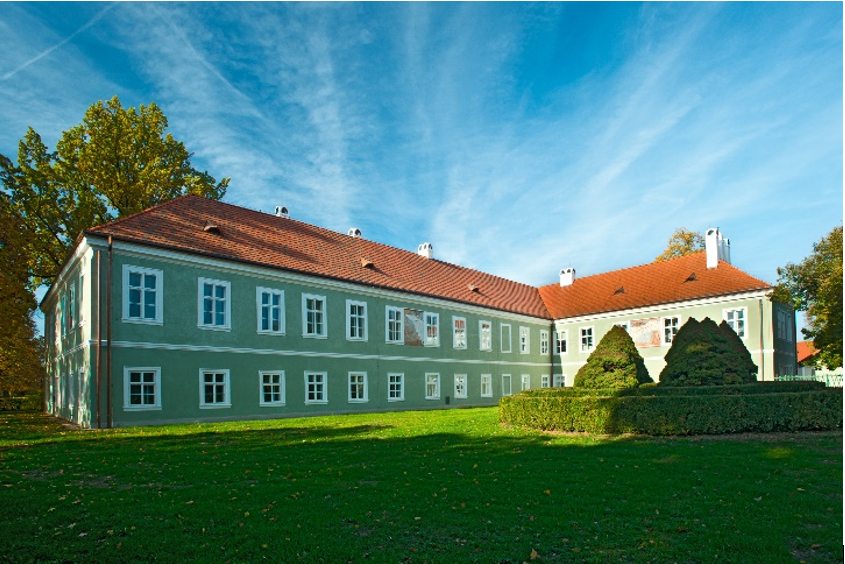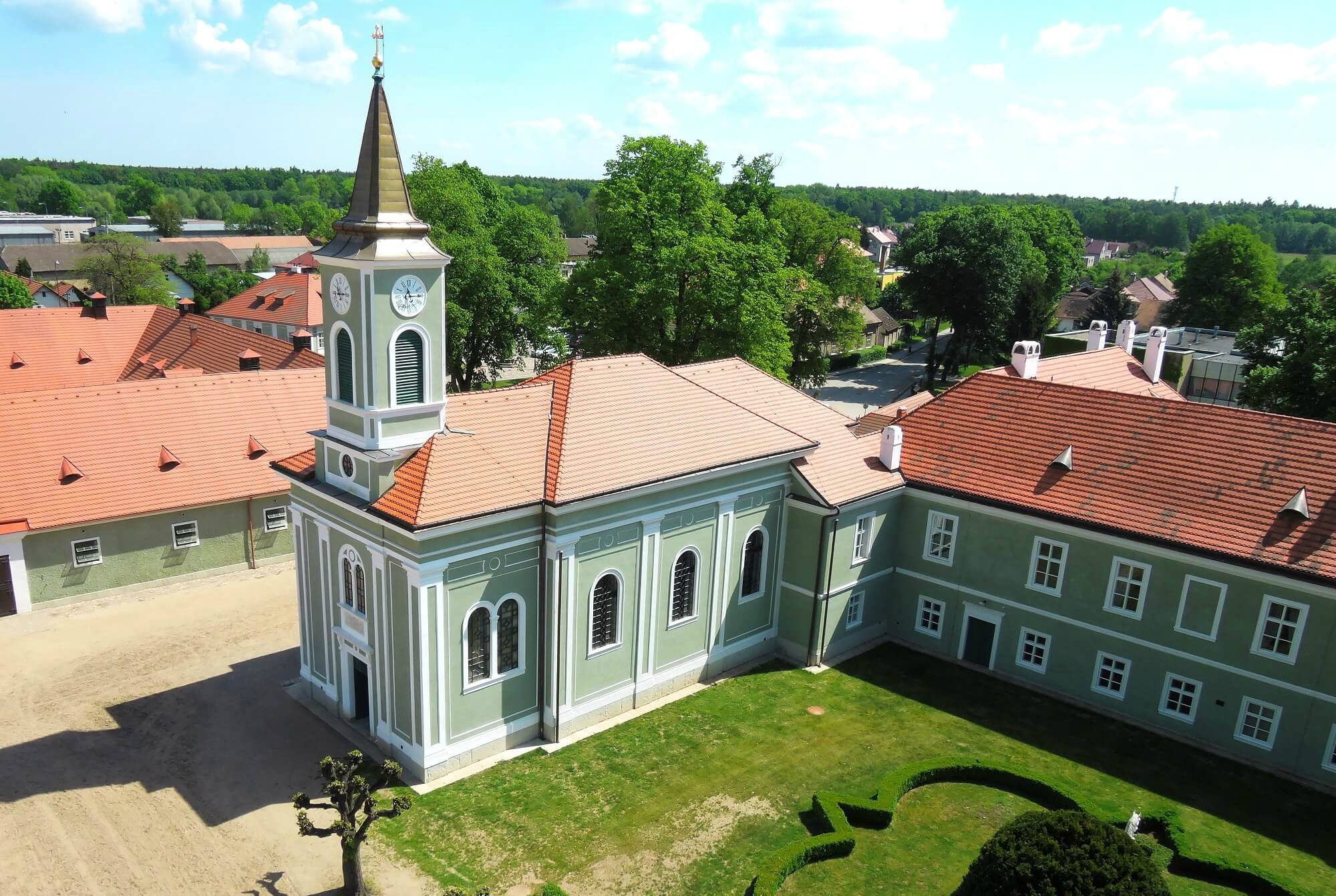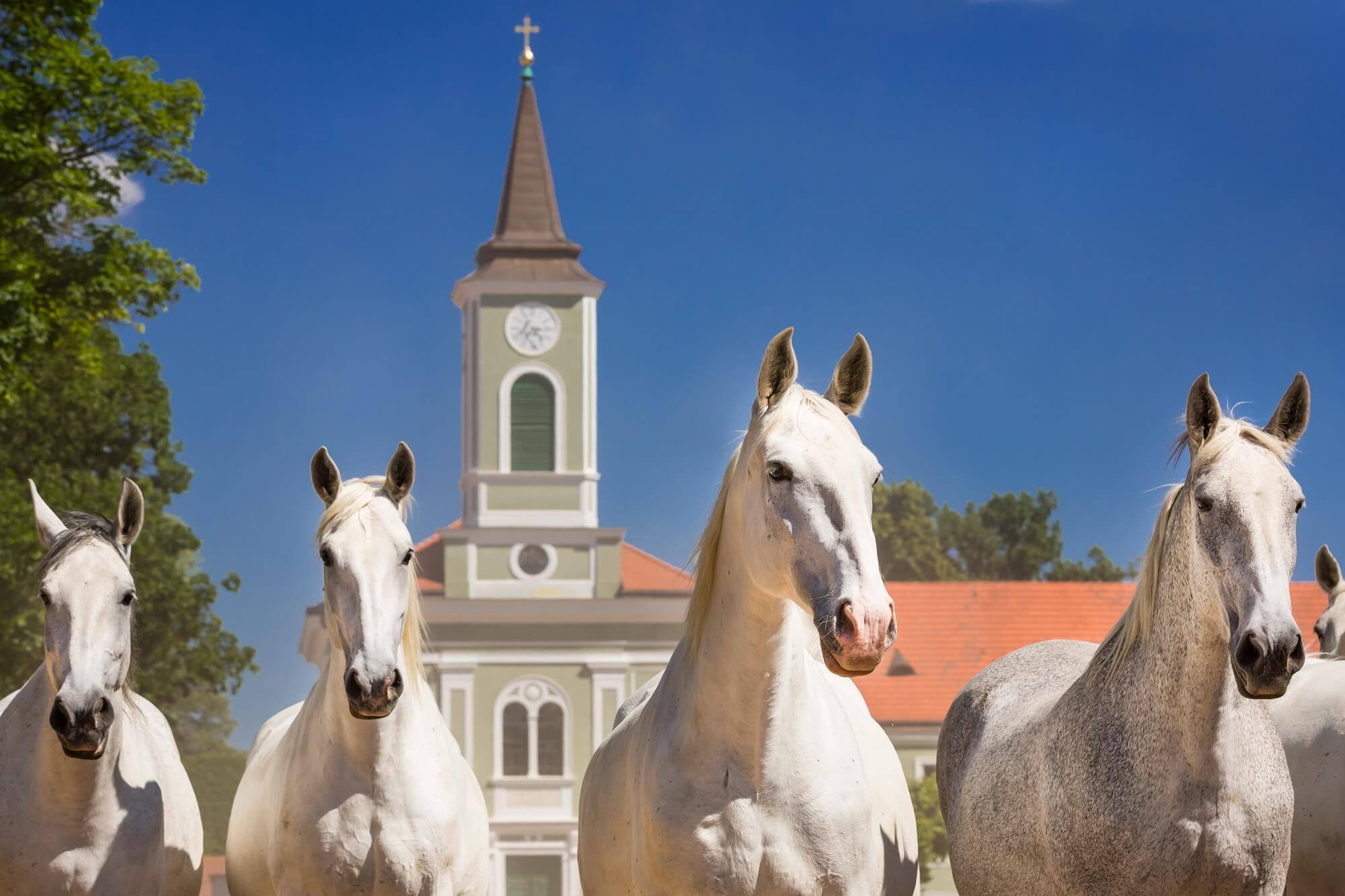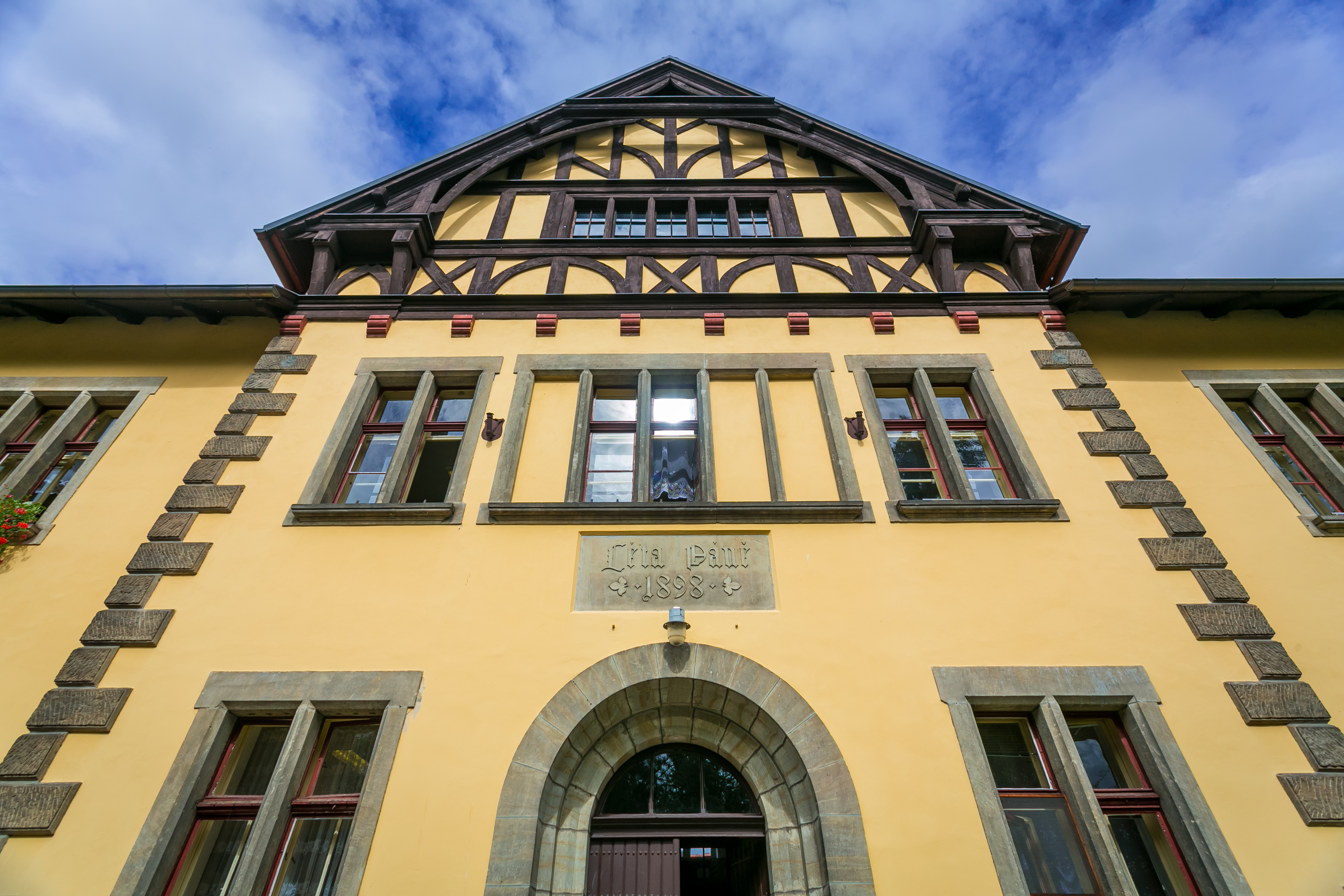The break-up of Austro-Hungarian monarchy in 1918 at first posed threat to Kladruby stud farm owned by the Imperial family for 339 years. The Kladruber horse was traditionally connected with the pageantry of Imperial Court that new Czechoslovak Republic was so critical about. That is why in October 1918, immediately after the foundation of the independent Czechoslovak Republic, the Imperial coat of arms was removed from the southern facade of Řečany nad Labem Vrata Gate. The number of stud farm horses was dramatically reduced in 1918 and 1919.
Yet, soon it came out the Kladruber horses were needed for ceremonial purposes even in the new Czechoslovak Republic and the former Imperial Court Stud Farm was under the new political set up maintained as a state company (State Stud Farm Kladruby nad Labem) under the Ministry of Tillage. The Kladruber horse became a part of the first Czechoslovak President Tomáš G. Masaryk’s ceremonies: the coach drawn by Kladruber horses accompanied the audiences of new ambassadors, inauguration of the President and other official events such as for example the frequent state visits to the newly established republic.
After the Second World War, the stud farm became part of the State Breeding Farm. In about the middle of 20th century an agricultural training school spe cialized in horse breeding was opened in the manor house premises.
The new operational and economic requirements also triggered the extension of historical stud farm premises and thus new administration buildings and a coach house were built on the grounds of the former manor house garden. This inappropriate intervention at the former Manor House garden helped to vacate most of the Manor House rooms from administrative functions and launch their restoration. It started in 1996 by the restoration of the former imperial rooms on the of the manor house upper floor. The historical exposition became part of the visitors’ tour of the stud farm. In addition, the office of the stud farm director was returned to the manor house according to the historical tradition.
In 2007 the Kladruby nad Labem Farm Stud Farm Landscape55 was inscribed in the national indicative list for the future nomination for inscription in the World Heritage List. This act accelerated plans for the general restoration of stud farm premises as well as the work on materials necessary for the nomination. The first ever management plan was drafted in several stages and the international cooperation was reinforced. An important instrument strengthening the preservation of Nominated Landscape56 was the declaration (2015) of conservation zone Kladrubské Polabí (Kladruby Elbeland) comprising extensive territory related to the Stud Farm. Since the care for Gala-carrossier Stud Farm on national level concerns several government departments, an inter-ministerial steering group was founded in 2015 and signed and an Agreement on general principles concerning restoration and further development of the National cultural monument Kladruby nad Labem Stud Farm was signed in order to balance multiple public interests in this exceptionally valuable landscape environment.
